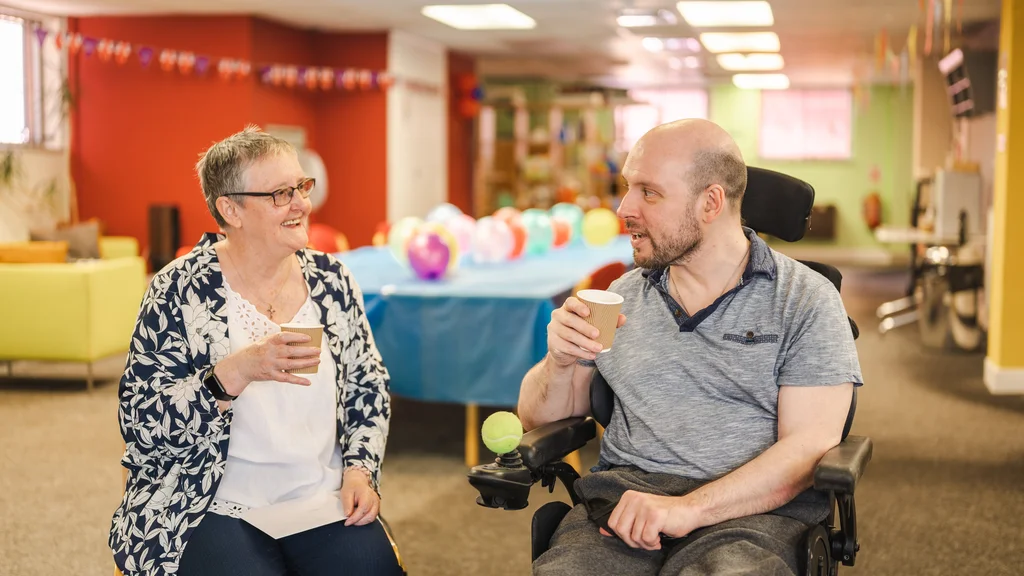Hosting an event is a brilliant way to start important conversations about ageism and help to change the way we all think about ageing. Here are some tips for hosting your own event.
- Got an idea for an event, or want to host one but not sure where to start? Think about what you want your event to achieve - is it to educate people about ageism? Is it to bring people together to discuss it? You can then think of the best format for the event.
- Who would you want to invite? Friends, family, others in your local community?
- Think about when you’d like to host the event. This might be dependent on your own commitments, or the available times you could use a community space. When you have a date in mind, you can make a plan and timeline which includes all the tasks you need to complete.
- Choose a venue which works for your event size and needs. Make sure it will be accessible for everyone you’re inviting.
- Expect changes and have back-up plans in case there are technical issues, if more or less people show up on the day, or if there’s bad weather. For example, if needed could you host your event online instead?
- Don’t underestimate how long things can take! Set aside time and if you want to, you could bring in friends, colleagues or other people you know help take on specific tasks.
A vital part of hosting a successful event is ensuring people understand what’s being offered.
Creating your flyer/promotion email
- Keep it simple and answer the key questions people would need to know to attend: what is it, where is it, when is it, who is invited? You could also include a map of the event location so people can easily find it.
- Do people need to sign up to come? If so, is it an online form? Do they need to email you, or can they just show up?
- Use plain English and welcoming, friendly language
- Include contact details (e.g. of your group, or your own if you are sharing the event with people you know) so people can ask questions if needed
- If you’re creating a flyer, keep it accessible and avoid using lots of colours! If in doubt, white background with black text works best, with a simple font (like Arial), font sizing of 14 or more, and enough space in between the lines of text.
When promoting your event
- Share details of the event with people you know via email or text, and encourage them to share with others too
- Make use of Facebook groups if you have an account
- Put up posters in community spaces (with permission) which people are likely to pass through and visit as part of their daily lives e.g. shops, cafés, hairdressers
- Invite people from community groups
- You could even contact your local newspaper to get the word out further!
- Make a plan for your event, including a schedule with timings so you know how long you can spend doing each part of it. For example, is five minutes to welcome people enough or are you asking people to introduce themselves which will take more time?
- Give people what is known as a ‘warm welcome’ to help ensure they can have a good experience. At the start of the session, this looks like saying hello to people and introducing yourself, providing an outline of the session and getting people to introduce themselves if there’s time. At the end of your event, thank everyone for coming and remind them how they can take action on ageism in their own lives.
A photography competition?
- Be mindful of consent. Clearly say that by submitting an entry, participants consent to their photos being used for the competition. Let people know that they can choose to remove their photos after they enter if they want to.
- Consider how you will receive entries. Will you ask people to send their photos to an email address?
- Reach out local photographers to let them know how to get involved
- Consider your judging panel. Who will you invite and how can you include a mix of perspectives? How will the judging be fair? For example, you could separately send the entries to each judge and ask them to select their top three photos.
- Consider how you will celebrate the entries and winners. Will you host an exhibition in a local community space? Can you offer prizes?
An exhibition?
- Proactively reach out to people and organisations to encourage them to submit exhibits
- Have an interactive, engaging launch event. Here’s a good case study for some inspiration!
- Have a quiet space at the exhibition to ensure inclusivity
- Base the event in a community café or library that has regular customers to help ensure attendee numbers
- Involve local libraries to see if your exhibition can go on tour
A discussion group?
- Welcome everyone and invite people to introduce themselves
- Go through the purpose of the group
- Prompt discussion through asking questions that you’ve prepared, either about people’s personal experiences, or how they feel about society’s attitudes to ageing more broadly.
- We’ve got more tips for hosting a discussion group on our website here.
An intergenerational event?
- If appropriate for your event, you could start things off with an ice breaker to give people of different generations time to chat to each other for example, asking a question like ‘If you could learn how to do anything, what would you learn and why?’
- If you’re already part of a community group, you could develop a good partnership with schools/local youth organisations
- Find an example of a successful intergenerational event here.
